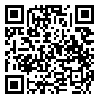BibTeX | RIS | EndNote | Medlars | ProCite | Reference Manager | RefWorks
Send citation to:
URL: http://ph.aui.ac.ir/article-1-1185-en.html
The house of Akhawan-e-Haghighi in Isfahan, which is a building belonging to the late Safavid to early Qajar period, contains a significant collection of wall paintings. Monochrome azure paintings on the plaster surface, which is one of the traditional examples of wall painting of the Islamic period, can also be seen in this building. Both in terms of amount and size and in terms of the subject, the azure paintings of the Haghighi house are remarkable and unique. The similarity of the use of azure color on a white background in European pottery with azure color wall paintings on plaster surface can be a key in finding new hypo texts for this type of wall painting. This research aims to show the impact of imported pottery from Europe on Iranian art, especially in this case, trying to reveal the content and basis of other murals of this kind found in the cities of Isfahan, Kashan, and Shiraz, and furthermore to examine the intertextuality relationship of these motifs with tiles and pottery. It also reaches one of the less mentioned sources of the influence of Western art on Iranian art, that is, the pottery exported from Europe to Iran. In this research, an attempt is made to answer the question of what are the hyper textual relationships of these paintings by examining the intertextuality of this type of wall paintings in a descriptive-comparative way. And can the so-called Dutch blue-white porcelain of Delft be considered the hypo texts of the wall paintings of this house? In this research, by examining the homogeneity of the form and content of the wall paintings of the Haghighi house with the assumption that the European pottery is the hypo texts of the azure paintings of the Haghighi house, the main question addressed in this study is whether the intertextual and hyper textual relationships of these motifs can be based on theories of Gerard Genette’s hypertext? Then, executive, reduction, displacement, deletion, thematic, thematic, hypo texts and text content are examined. As a result, with the help of Genette’s theory of intertextuality, the place of the Dutch blue and white pottery motifs is revealed as one of the hypo texts of the wall paintings of the Haghighi house, and the relationships of transformation and homogeneity between the hypo texts and hypertext are investigated.
| Rights and permissions | |
 |
This work is licensed under a Creative Commons Attribution-NonCommercial 4.0 International License. |





